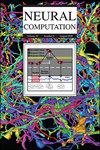具有尖峰频率自适应的连续吸引子神经网络动力学。
IF 2.1
4区 计算机科学
Q3 COMPUTER SCIENCE, ARTIFICIAL INTELLIGENCE
引用次数: 0
摘要
吸引子神经网络将神经信息存储为由大量相互连接的神经元组成的动态系统的定态。吸引子的特性使神经系统具有鲁棒性,但也带来了网络状态快速更新的困难,影响了大脑对信息的更新和搜索。为了克服这一困难,一种解决方案是在吸引子网络动力学中加入适应,即适应作为一种缓慢的负反馈机制来破坏原本永久稳定的状态。通过这种方式,神经系统一方面可以使用吸引子状态可靠地表示信息,另一方面,在涉及快速状态更新的情况下执行计算。已有研究表明,具有适应性的连续吸引子神经网络(a - cns)具有丰富的动态行为,可以解释各种脑功能。在这篇综述中,我们提出了一个全面的观点,丰富多样的动态的a - can。此外,我们提供了一个统一的数学框架来理解这些不同的动力学行为,并简要讨论了它们的生物学意义。本文章由计算机程序翻译,如有差异,请以英文原文为准。
Dynamics of Continuous Attractor Neural Networks With Spike Frequency Adaptation
Attractor neural networks consider that neural information is stored as stationary states of a dynamical system formed by a large number of interconnected neurons. The attractor property empowers a neural system to encode information robustly, but it also incurs the difficulty of rapid update of network states, which can impair information update and search in the brain. To overcome this difficulty, a solution is to include adaptation in the attractor network dynamics, whereby the adaptation serves as a slow negative feedback mechanism to destabilize what are otherwise permanently stable states. In such a way, the neural system can, on one hand, represent information reliably using attractor states, and on the other hand, perform computations wherever rapid state updating is involved. Previous studies have shown that continuous attractor neural networks with adaptation (A-CANNs) exhibit rich dynamical behaviors accounting for various brain functions. In this review, we present a comprehensive view of the rich diverse dynamics of A-CANNs. Moreover, we provide a unified mathematical framework to understand these different dynamical behaviors and briefly discuss their biological implications.
求助全文
通过发布文献求助,成功后即可免费获取论文全文。
去求助
来源期刊

Neural Computation
工程技术-计算机:人工智能
CiteScore
6.30
自引率
3.40%
发文量
83
审稿时长
3.0 months
期刊介绍:
Neural Computation is uniquely positioned at the crossroads between neuroscience and TMCS and welcomes the submission of original papers from all areas of TMCS, including: Advanced experimental design; Analysis of chemical sensor data; Connectomic reconstructions; Analysis of multielectrode and optical recordings; Genetic data for cell identity; Analysis of behavioral data; Multiscale models; Analysis of molecular mechanisms; Neuroinformatics; Analysis of brain imaging data; Neuromorphic engineering; Principles of neural coding, computation, circuit dynamics, and plasticity; Theories of brain function.
 求助内容:
求助内容: 应助结果提醒方式:
应助结果提醒方式:


